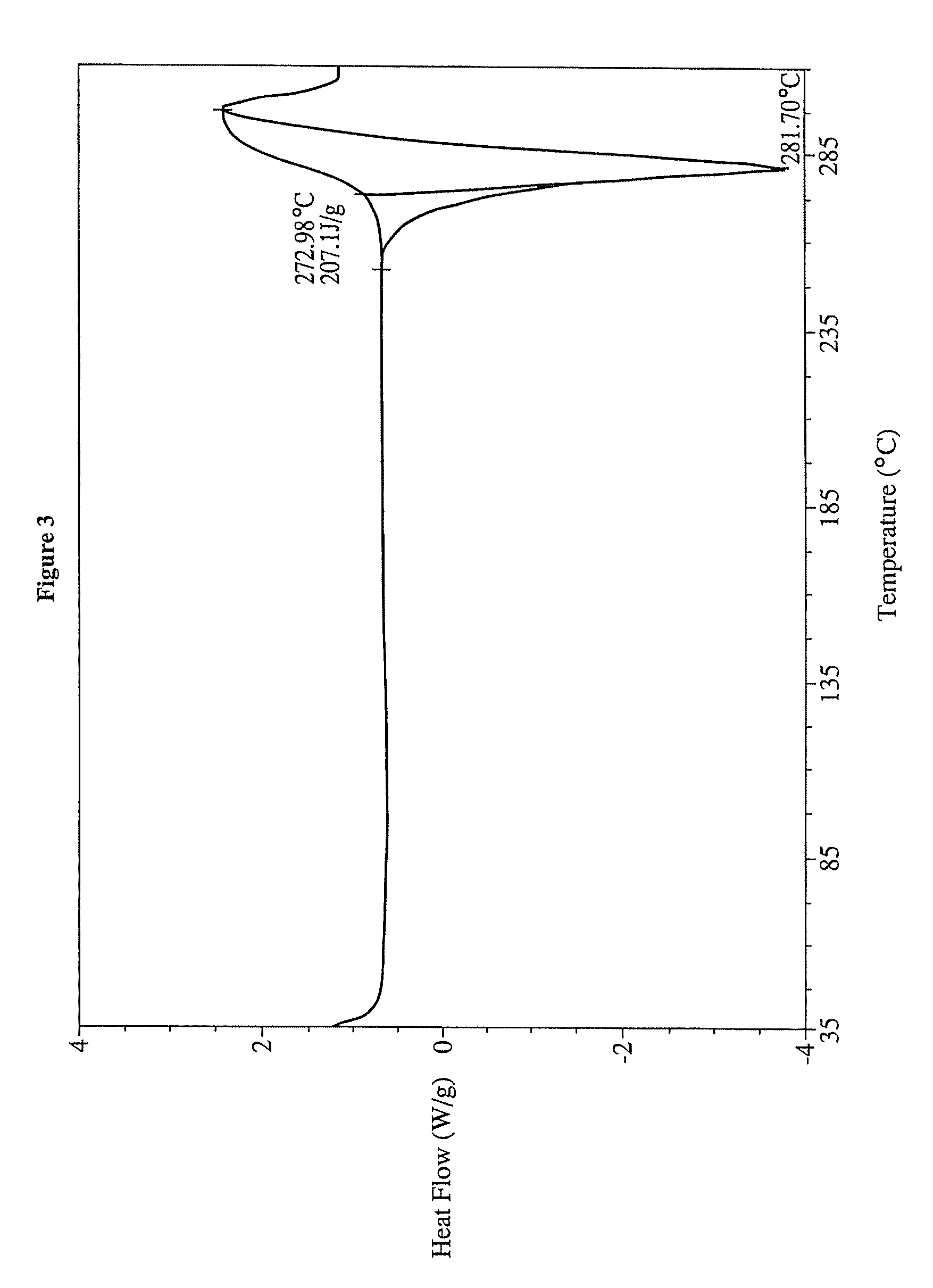Ansamycin formulations and methods of use thereof
a technology of analogues and formulations, applied in the field of solid forms of analogues of geldanamycin, can solve the problems of poor water solubility of geldanamycin, difficult to deliver therapeutically effective doses, and difficulties in developing an applicable agent for therapeutic applications, so as to improve the bioavailability of geldanamycin analogs and improve the bioavailability
- Summary
- Abstract
- Description
- Claims
- Application Information
AI Technical Summary
Benefits of technology
Problems solved by technology
Method used
Image
Examples
example 1
Preparation of Form I of 17-AG
[0210]
[0211]A 22 L RB flask was equipped with a bottom drain valve, mechanical stirring, a 1 L addition funnel, internal temperature probe, and an inert gas bypass. Geldanamycin (500 g, 1 eq) and anhydrous THF (5.0 L) was charged to a 22 L RB flask. The stirring is started and Ammonia in MeOH (7 M) is charged (1.0 L, 8.0 eq.) The reaction was stirred at ambient temperature 7 hours. The LCMS indicated complete consumption of starting material at 7 hours. During the course of the reaction, the color changed from yellow to deep purple. Heptane (14 L) was slowly added to the reaction mixture, inducing crystallization of the desired product from solution. The brick red slurry was stirred overnight. The product was isolated by suction filtration and rinsed with 2:1 (v / v) heptane / THF (0.5 L). Oven drying provided crude 17-AG as a powdery, dingy red solid (470 g). The crude material is dissolved in a 4:1 mixture of acetone / ethanol (18-19 L) with heating and cla...
example 2
Preparation of Form II of 17-AG
[0212]Form I 17-AG (10 g) from the preceding procedure was dissolved in acetone / ethanol at 30° C. and clarified. The flask and the in-line filter were rinsed, and the solution was concentrated via a rotovap to a thick slurry. Then 100 mL of water was added and the rest of the organic solvents removed by vacuum distillation. When the distillate collection ceased, the bath temperature was increased from 40° C. to 60° C. and a small amount of water was removed. Then another portion of water was added (100 mL). With a bath temperature of 80° C. and slight vacuum, water was distilled for ca. 5 min. The slurry remained purple, so the vacuum was disconnected, and the bath increased to 100° C. The slurry was mixed for ca 1 h. The slurry was then allowed to cool to ambient temperature overnight and the purple solids were isolated from water. The Karl Fisher analysis was 0.14% and all residual solvents were low (MeOH: 106 ppm, EtOH: 173 ppm, Acetone 230 ppm, and...
example 3
Preparation of Form III of 17-AG
[0213]
[0214]To 400 mL of distilled water was added 1 g of 20% solid dispersion of 17-aminogeldanamycin in PVP K-30 (as prepared in Example 14). The suspension was heated to 60° C. until complete dissolution of the solid. After heating at 60° C. for 5-10 min, purple crystals precipitated from the solution. The mixture was allowed to cool to 23° C. and the purple crystalline material was isolated by filtration. The collected crystals were dried for 2 days in vacuum oven at 80° C. to give 155 mg 17-AG Form III as purple powder. Yield 75%. MS (ESI(+)) m / z 563.4 (M+H2O)+.
PUM
| Property | Measurement | Unit |
|---|---|---|
| solubility | aaaaa | aaaaa |
| solubility | aaaaa | aaaaa |
| particle sizes | aaaaa | aaaaa |
Abstract
Description
Claims
Application Information
 Login to View More
Login to View More - R&D
- Intellectual Property
- Life Sciences
- Materials
- Tech Scout
- Unparalleled Data Quality
- Higher Quality Content
- 60% Fewer Hallucinations
Browse by: Latest US Patents, China's latest patents, Technical Efficacy Thesaurus, Application Domain, Technology Topic, Popular Technical Reports.
© 2025 PatSnap. All rights reserved.Legal|Privacy policy|Modern Slavery Act Transparency Statement|Sitemap|About US| Contact US: help@patsnap.com



